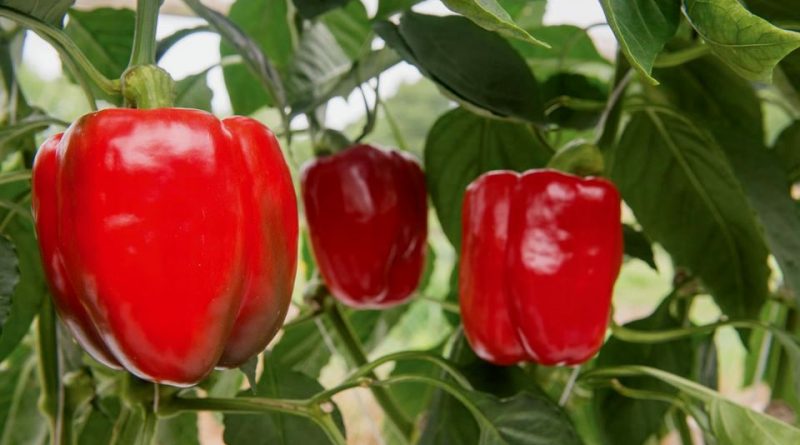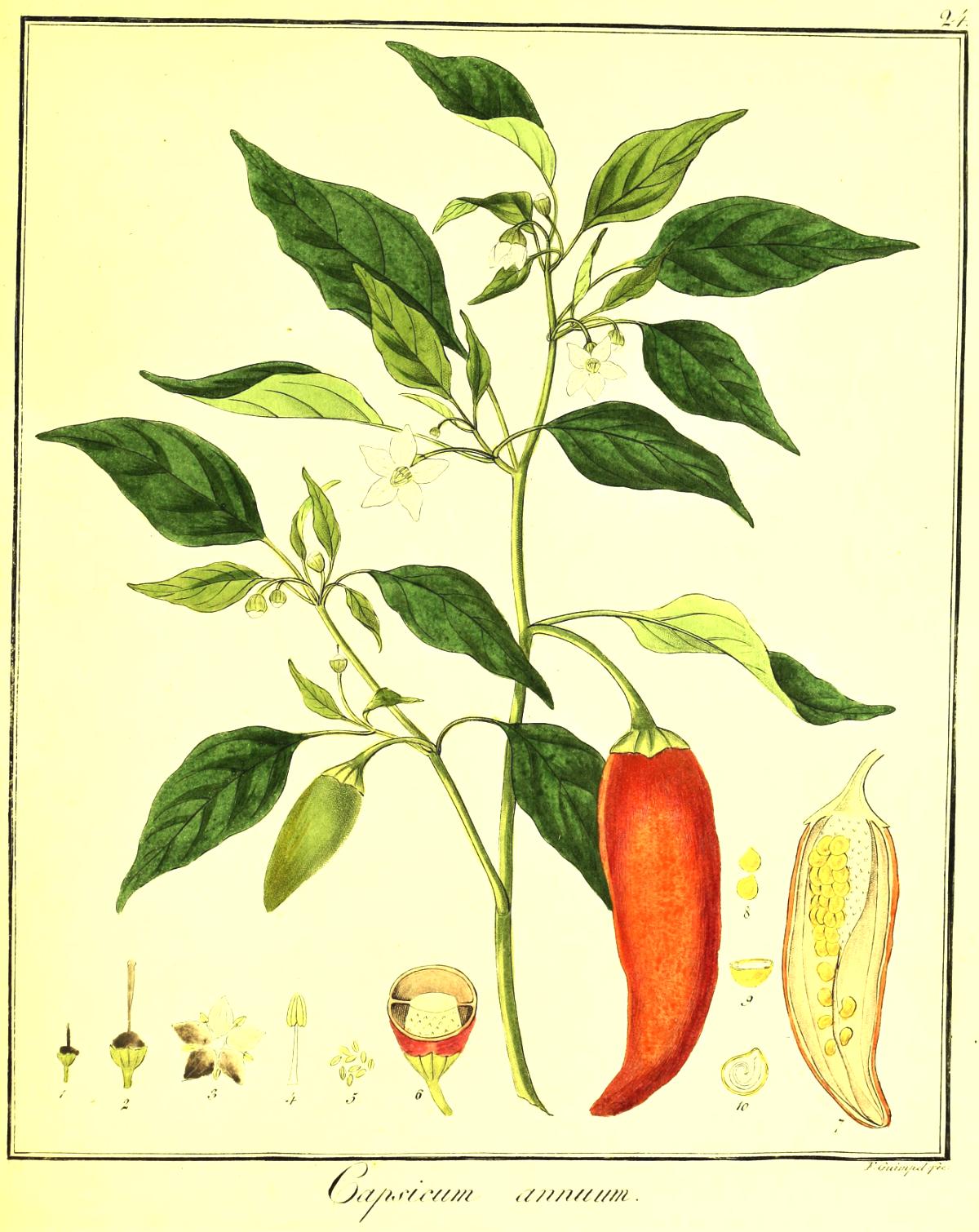Capsicum annuum
Capsicum annuum
The Pepper (Capsicum annuum L.) is an annual herbaceous species (among the 5 main species of the genus Capsicum), which includes peppers and peppers, of the family of the Solanaceae.
Systematics –
From the systematic point of view it belongs to the Eukaryota Domain, Kingdom Plantae, Magnoliophyta Division, Magnoliopsida Class, Sottoclasse Asteridae, Order Solanales, Family Solanaceae and then to the Genus Capsicum and to the C. annuum Species.
Etymology –
The term Capsicum comes from cápsa cassa or from the Greek kapsákion small orciolo, due to the hollow structure of its fruit. The specific epithet, annuum, refers to the annuity of its vegetative cycle.
Geographic Distribution and Habitat –
Capsicum annuum is a species native to the American continent that, together with tomatoes and other species, was brought to Europe in the sixteenth century, with Spanish and Portuguese expeditions. Today it is widespread and is the main species of the genus Capsicum cultivated in many countries, including: China, Korea, India, Italy, Mexico, the Malaysian archipelago, Hungary.
Description –
The Capsicum annuum is a shrub with an upright habit and with lanceolate, green leaves. A hair can be present on the stem and on the upper page of the leaves. Firoi are white, single with yellow / green stamens, with 5-7 petals. The fruit of the pepper is a capsule that when ripe can have very different colors and shapes.
Cultivation –
The cultivation of Capsicum annuum makes it a very common vegetable in the kitchen of all the countries of Europe and in many of the world, with a cultivated area that exceeds 1.5 million hectares.
For the technique of cultivation of pepper you can consult the following sheet, while for the peppers go to this other contribution.
Customs and Traditions –
Capsicum annuum is almost certainly the most cultivated species in the world among the Capsicum genera. This species is made up of many cultivars and also includes C. annuum var. aviculare, (chiltepin), which according to some is the wild subspecies closest to the common ancestor of all species.
The pepper originally evolved and spread in an area between: Brazil and Bolivia, Peru, the Caribbean, Argentina, up to Texas, Florida, California, Louisiana and Arizona. When the Spaniards arrived in Mexico, the ancient Aztec peoples had selected many varieties.
Peppers contain many substances and active ingredients, including capsaicin, responsible for the spiciness of some varieties, and solanine, which varies between different varieties. It also contains different percentages of water (around 92%) and of Carbohydrates, Fibers, Proteins, Fats and Vitamin C. Particular mention should be made of the variability of the capsaicin content, and therefore of spiciness, this varies, depending on the variety, from zero to more than 100,000 Scoville units. Furthermore, some of the bird’s eyes, such as the Ugandan one, which have a spiciness of up to 175,000, are not Capsicum annuum, but C. frutescens or C. chinense.
The pepper, as well as for food purposes, is also used in the medical field. In this sense, varieties with a high content of capsaicin, an alkaloid that has the ability to bind to certain pain receptors, desensitizing them, are of great interest; capsaicin appears to have pain relieving properties. It would also be useful against inflammation and in the management of inflammatory diseases, including important ones such as rheumatoid arthritis.
Capsicum annuum stimulates blood circulation, warms the muscles and reduces the formation of lactic acid, which is why it is used in pre-competition sports massage oils along with other oils derived from almond, olive, sunflower, Arnica montana, camphor and vitamin complexes.
In homeopathy it is used as a symptomatic for inflammation of the irritated and burning mucous membranes of the entire gastrointestinal and urinary tract, accompanied by secretion and tenesmus: from gastritis and esophagitis with reflux to hemorrhoids with anal burning, from rectal tenesmus to urogenital inflammation.
Preparation Mode –
The pepper is a vegetable that can be consumed and cooked in various ways, also depending on the culinary traditions of various countries. In Italy it is consumed cooked or raw and also preserved mainly under vinegar or in oil. The varieties with high spiciness are instead used as spices for various dishes and preserved either in oil or in the dry state whole or even in powder form.
Guido Bissanti
Sources
– Wikipedia, the free encyclopedia.
– Treben M., 2000. Health from the Pharmacy of the Lord, Advice and experience with medicinal herbs, Ennsthaler Publisher
– Pignatti S., 1982. Flora of Italy, Edagricole, Bologna.
– Conti F., Abbate G., Alessandrini A., Blasi C. (edited by), 2005. An annotated checklist of the Italian vascular flora, Palombi Editore.
Warning: Pharmaceutical applications and alimurgical uses are indicated for informational purposes only and do not in any way represent a medical prescription; there is therefore no liability for their use for curative, aesthetic or food purposes.


